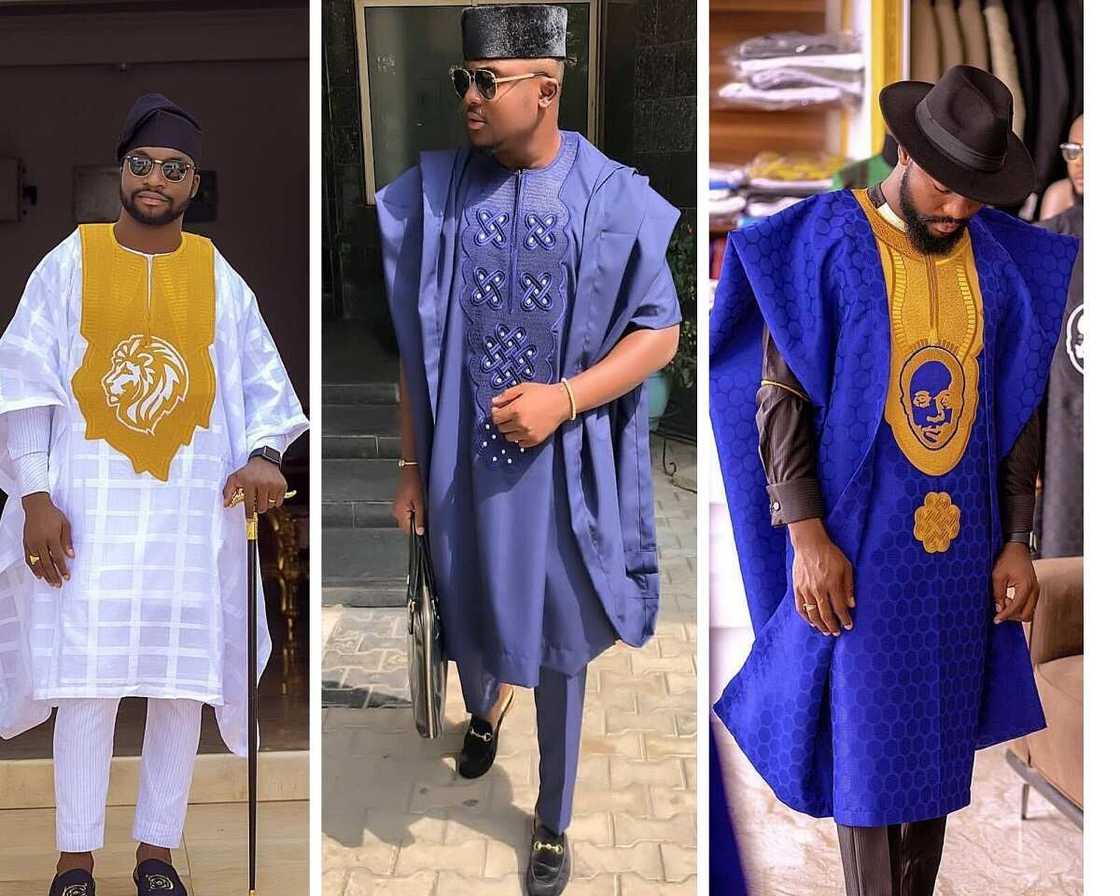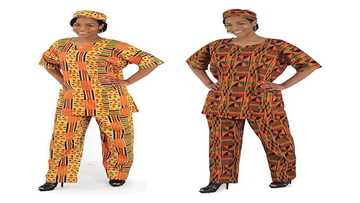Agbada fashion for men: 10 things you need to know
Africa is known for several things, from the beautiful wildlife to breath-taking landscapes, unique culture (song and dance), delicious cuisine, and more importantly, amazing fashion. Like everything else, African fashion is known for its colourfulness and vibrancy, which has seen it copied across several countries around the world. One such example that has become popular worldwide is the Agbada for men.

Source: UGC
Formerly, the gown-like attires were reserved for a select few, but have since become popular among Africans of all walks of life. Even some foreigners wear it proudly as a celebration of African greatness.
10 things to know about the Agbada
Here is a list of 10 things to know about the Agbada fashion for men, especially if you are considering giving it a try.
1. It is believed to have originated from the middle eastern fashion
What is the meaning of Agbada? The word is a Yoruba phrase that loosely translates into clad in English, but means a voluminous attire. It is thus not surprising that most people assume that the fashion trend originated from Yoruba or broader West Africa. However, the truth is much further than that.
Like several things in Africa, the fashion trend was inspired by early visitors to Africa, in this case, Berbers and Arab merchants originating from the Middle East and Mediterranean region. They used to wear flowing robes and baggy trousers that were ideal for riding horses.
They also introduced other fashion trends, such as robes worn by royals and court officials. Over time, Africans excelled at the art of embroidering. They added their own unique styles to these foreign clothes, leading up to the colourful embroidered gowns that are now synonymous with African art and culture.
2. It was worn by royals and elites in the ancient West African communities
After being adopted by Africans, the Agbada attire became an exclusive fashion for African royals and elites, being worn during ceremonies and other social events as a symbol of their power and stature. It was especially popular in countries such as Nigeria, where it was worn by kings, princes, chiefs, and other noblemen.

Source: UGC
3. It was not limited to just the Yoruba
Agbada is more commonly associated with the Yoruba people of Nigeria. However, it is not limited (traditionally) to just these people. In the early 12th and 13th century, the fashion trend was quite popular in West Africa, and there are even several styles of traditional attire similar to the Yoruban style in different communities such as:
- Mbubb and Boubou amongst the Wolof
- Babban Riga amongst the Hausa
- Glandore amongst the Tuareg
Today, this style of fashion is found in many other West African communities such as Senegal, Mali, Gambia, Mauritania, Guinea, Niger, and others. It has also infiltrated several communities in East, Central, and Southern Africa, especially Bantu people.
READ ALSO: List of new African wear styles to check out
4. It can be worn by anyone – men, women, and children
Agbada fashion has changed with time. It is still predominantly a men’s fashion, and you are more than likely to see celebrities and other influential figures wearing it. However, it is not exclusively for them.
Today, anyone can wear Agbada regardless of their age, gender, or even social standing. The trend has become so popular such that it has breached racial divide, with people of other races being occasionally sported rocking the style.
5. It is a 4-piece outfit
How do you wear an Agbada? Unlike most African outfits, Agbada sets itself apart in that it contains 4 pieces, instead of the usual two or three. Below is a look at each of these pieces, which are needed to complete the attire:
a) Awosoke
Awosoke is a sizeable free-flowing garment that is the signature of Agbada fashion. It is comprised of a rectangular centre-piece covering both the front and the back, with the front section featuring a variety of embroidery.
Traditionally, the gown reached ankle length, but modern styles have seen it become shorter; usually around the knees, but some styles even being as short as slightly below the waist.
b) Awotele
Awotele is the undervest, which looks like an African embroidered shirt. Traditionally, there were two Awotele styles: a loose-fitting shirt with elbow sleeves, and a loose-fitting shirt with no sleeves. However, modern fashion trends have seen the rise of new styles, such as long sleeves and tight-fitting (slim-fit) shirts.
READ ALSO: Top trending men's African styles to rock this year
c) Sokoto
Sokoto is the trousers. The Agbada Yoruba style features pants that are secured by a draw-string. They can be loose-fitting (baggy) or close-fitting (slim-fit or straight cut trousers). The length can also vary from ankle-length pants to ones reaching between the knees and the ankles.
d) Fila
Fila is the hat or the headgear that is worn to complement and complete the Agbada look. There are two common types - the Gobi, a round hat, and Abetiaja, a crescent-like hat with flaps.
6. There are different types (styles) of Agbada fashion

Source: UGC
Agbada attire is ideal for a wide range of occasions and situations. As a result, there are different Agbada styles. The two main ones are:
- Ceremonial: the ceremonial style is the more traditional, and it features a large size gown that is made from heavy, premium materials. It also features more extensive embroidery. It is usually worn during religious ceremonies, wedding events, funerals, or even by the ruling class (both traditional and modern-day rulers) and elites in official functions.
- Casual: casual attire is the most common style. It features smaller and less voluminous material. The material used is also usually less expensive, for example, plain cotton, thus making it readily available to anyone. It can be worn in nearly any occasion, from weddings and funerals to simple family gatherings and other social events.
7. It needs the right material
Agbada is all about the material used; the higher the quality of the material, the better the appearance. So, which material is best for Agbada? Traditionally, heavy, thick material was used to make the attire, and some people still prefer this even today. In West African communities where the fashion is more popular, two types of material are used: the Aso Oke (northern weave) and Aso Ebi or Aso Ofi (narrow-band weave).
Both of these materials are woven traditionally using high-quality fibres such as cotton yarns and wild silk. Due to the quality nature of these materials, the gowns made are visually striking, though quite expensive, and thus are usually worn on special occasions such as weddings, funerals, traditional ceremonies, and holidays.
READ ALSO: Hottest African dress styles for wedding guests
Aside from these traditional fabrics, Agbada outfits can also be made from using pure materials such as cotton. This is especially the case with casual attires, which are designed to be less voluminous and close-fitting. The use of cotton and other simpler fabrics also makes it more accessible to all people due to their inexpensive nature.
8. You need a large quantity of material to make one Agbada outfit
Agbada outfits use quite a quantity of materials compared to usual attires. So, how many yards do you need for Agbada? Well, it all depends on the design. The larger and more voluminous ones will require quite a lot of material.
However, the material required will also take into account your height and size. So, how do you measure Agbada material? A good professional tailor will guide you on this. They can also be very helpful in guiding you on how to cut Agbada material properly so that it leads to a great fit – not too much and not too little. Typically, you will need about 4 – 7 yards to sew a good quality Agbada attire.
READ ALSO: Latest Nigerian fashion for men
9. It needs the perfect accessories to make it complete
Agbada is visually striking on its own, but you need the right accessories to stand out even more. The various types of accessories you can wear include:
- Shoes: These are one of the top accessories for the attire. The perfect shoes to wear are loafers, boat shoes, leather sandals, and non-lace dress shoes (for formal occasions)
- Watch: a simple weather wristwatch will do, but you can ante up with a silver or gold wristwatch
- A bracelet: if you are not a fan of wristwatches, a bracelet will do. This can be anything from a metal bracelet to a beaded, leather, or woven one.
- A necklace: this can either be a traditional, beaded necklace or a modern one such as silver or gold necklace
- Eyeglasses: can be either prescription glasses or sunglasses
10. Storing it properly makes it last longer
Agbada is a high-quality attire that needs proper care to ensure longevity. This is especially the case with the ceremonial designs that are sewn using traditionally woven fibre clothes. Therefore, if you are interested in owning one or a few, be prepared to put in the effort through regular dry-cleaning and proper storage in a dry, clean place.
Forget western fashion; traditional African attires are currently a huge deal. If you are looking for a perfect way to turn heads whether at an event or while enjoying your day outdoors, Agbada is the ideal attire. Whether you are looking for something extravagant or straightforward yet stylish and visually striking, there are different styles for you to choose from.
READ ALSO: Newest trends for men's fashion in Africa
Source: YEN.com.gh








